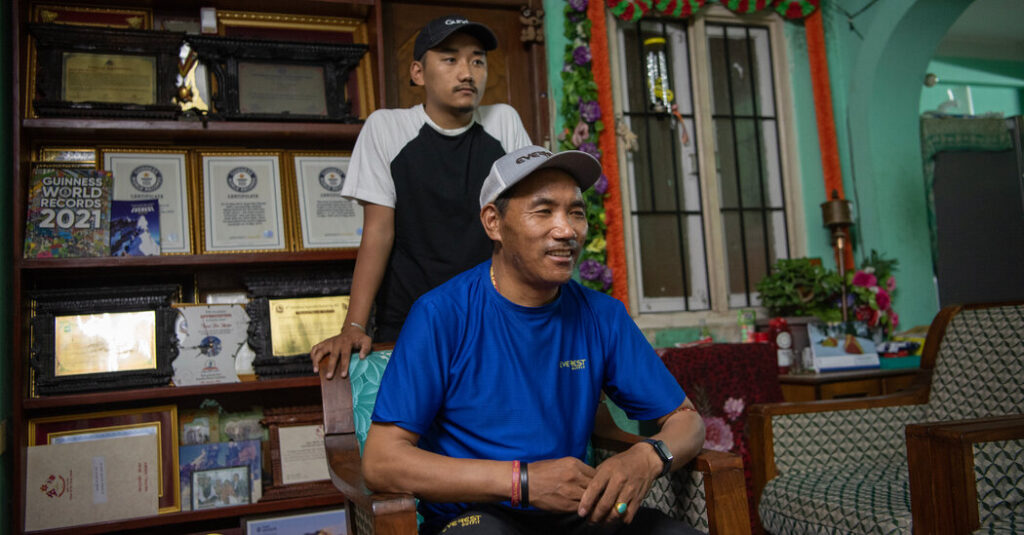Two Nepali Sherpas are taking one-upmanship to an extreme on top of the world.
Pasang Dawa Sherpa and Kami Rita Sherpa, decorated mountain guides and friends, have been scaling Mount Everest in rapid succession in recent days in pursuit of the record for most ascents of the world’s highest peak.
It is a grueling competition with monetary rewards and abundant dangers, turning what is a once-in-a-lifetime experience for most climbers into a repeat performance for the veteran Sherpas.
For decades, the two men have been trying to outdo each other, but the rivalry has heated up this year. Their series of climbs began on May 14, when Pasang Dawa Sherpa, 46, summited Everest for a record-tying 26th time. Days later, Kami Rita Sherpa, 53, regained the crown with his 27th ascent of the mountain.
Then, on Monday, Pasang Dawa Sherpa — eight days after his previous climb — did it again. A day later, Kami Rita Sherpa reached the top once more, for a new mark of 28 summits.
It was unclear whether Pasang Dawa Sherpa planned a third ascent of Everest this season, which started in April and ends the first week of June. Such a feat has never been attempted in the history of Everest climbs, mountaineering experts say.
Kami Rita Sherpa’s expedition agency said he wanted to reach 30 ascents before retiring. Pasang Dawa Sherpa’s agency said he was determined to match and ultimately break Kami Rita Sherpa’s record. Neither man was available for comment.
Not everyone in the mountaineering world was cheering on the friendly contest. Ang Tshering Sherpa, a former head of the Nepal Mountaineering Association, said any competition on the mountain could turn deadly.
“Competition in mountains poses a risk to life,” he said. “Unhealthy competition should be discouraged.”
Sherpas, the backbone of Nepal’s climbing industry, have suffered nearly one-third of the 315 recorded deaths on Everest over the past century, according to the Himalayan Database, a mountaineering record-keeping body.
Since Pasang Dawa Sherpa first climbed Everest in 1998, he has sometimes summited the mountain twice in a year, and he has made at least one ascent almost every year, with a hiatus for the pandemic and an earthquake in Nepal.
So has Kami Rita Sherpa.
Their competition reflects the climbing industry’s limited resources. An expedition company with a record-holding Sherpa can draw more clients. Expedition agencies offer Sherpas money — exact amounts are unclear — for each record-breaking summit.
This year, Nepal’s tourism department issued 478 permits to foreign climbers for Everest, and about 900 people were expected to summit, including Sherpas. So far this season, 10 climbers, including four Nepali guides, have died on Everest.
The Sherpas are the movers of every Everest conquest. They fix ropes, repair ladders and carry food and equipment.
Most, including Pasang Dawa Sherpa and Kami Rita Sherpa, grow up around Everest, their dreams of a better life dependent on the money they earn when they help a foreigner summit Everest. But many are leaving the profession because of its dangers, modest compensation and limited safety net.


